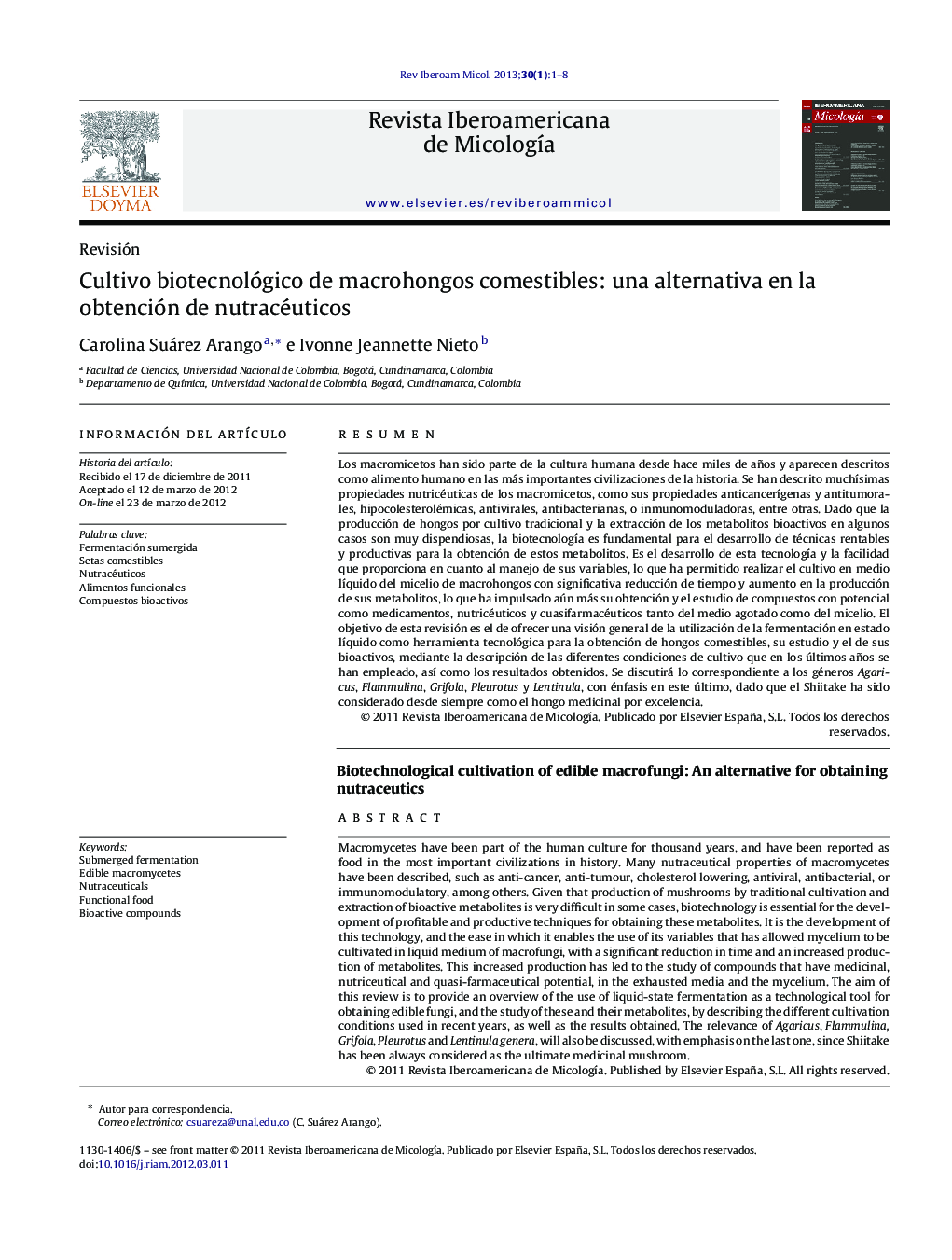| Article ID | Journal | Published Year | Pages | File Type |
|---|---|---|---|---|
| 3418839 | Revista Iberoamericana de Micología | 2013 | 8 Pages |
Abstract
Macromycetes have been part of the human culture for thousand years, and have been reported as food in the most important civilizations in history. Many nutraceutical properties of macromycetes have been described, such as anti-cancer, anti-tumour, cholesterol lowering, antiviral, antibacterial, or immunomodulatory, among others. Given that production of mushrooms by traditional cultivation and extraction of bioactive metabolites is very difficult in some cases, biotechnology is essential for the development of profitable and productive techniques for obtaining these metabolites. It is the development of this technology, and the ease in which it enables the use of its variables that has allowed mycelium to be cultivated in liquid medium of macrofungi, with a significant reduction in time and an increased production of metabolites. This increased production has led to the study of compounds that have medicinal, nutriceutical and quasi-farmaceutical potential, in the exhausted media and the mycelium. The aim of this review is to provide an overview of the use of liquid-state fermentation as a technological tool for obtaining edible fungi, and the study of these and their metabolites, by describing the different cultivation conditions used in recent years, as well as the results obtained. The relevance of Agaricus, Flammulina, Grifola, Pleurotus and Lentinula genera, will also be discussed, with emphasis on the last one, since Shiitake has been always considered as the ultimate medicinal mushroom.
Keywords
Related Topics
Life Sciences
Immunology and Microbiology
Microbiology
Authors
Carolina Suárez Arango, Ivonne Jeannette Nieto,
